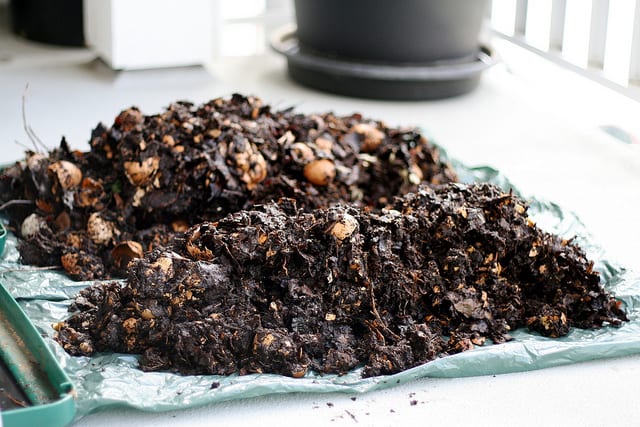Last month, we went big with a gigantic (or at least large) list of summer projects that you could embrace if you wanted to help save the planet. One of the “heftier” items on that list was to start composting in order to reduce waste of biodegradable items that are presently just ending up in landfills. Of course, we’ll start by saying that if you want deep and thorough information on composting, you should head on over to Planet Natural, where we think that the most comprehensive resources are for this. But if you’re just getting started and want some baby steps to get you going, we can talk you through that. You’re likely to find that composting is less cumbersome than you think – and your own natural instincts will take you elsewhere to expand your efforts!
Just In Case … What Exactly is Composting?
Just in case, we figured we should probably explain what composting is. It’s likely that many of you know, so feel free to skip this section. But it’s also possible that this is your first exposure to the concept, so we’ll do a quick explanation. Composting is when you collect your yard and household organic waste (ie: anything that can decompose), mix them together and then let nature take its course. As the items are mixed together, millions of microscopic organisms such as bacteria and fungi make their home in your compost pile. These organisms constantly devour and recycle your compostable waste and the end result is the production of rich organic fertilizer that you can use for all of your lawn and gardening projects!
Um…That Sounds Gross!
We promise it’s not gross at all! We do certainly admit that you probably don’t want your composting bin or pile in your primary living area, for example. However, we’ve seen composting bins in kitchens and bathrooms and if you’re willing to spend a small amount of money you can get indoor bins that control smell. Just keep in mind that the benefit you’re giving the planet far outweighs any temporary grossness! Plus, at the end of the day, any exposure to dirt is good for you! Food scraps and yard waste make up twenty to thirty percent of what we throw away. Imagine a more natural alternative to having that all end up in landfills.
Step One: Location and Tools
You don’t need a lot to start composting. Essentially you only need a location and a container and one more secret ingredient. However, here is the kicker. Not surprisingly, when you mix together a large amount of organic waste and wait for it to be “recycled” by mini-organisms, there’s a smell involved. And, frankly, the visual isn’t so great either. So, for example, your front porch or right next to your neighbor’s fence border likely isn’t a great location. If you’re lucky enough to live in a house, a backyard is a super place for a compost pile if you want to keep it outside, and the basement is a great place if you’re looking to keep your compost confined to just where you and your family may encounter it. For apartment dwellers, the situation gets a bit more complex. Our recommendation is a corner of a kitchen or a utility closet. Balconies can also be fine locations.
After that, you’ll need a bin. Your container should be either plastic or ceramic and must include holes for ventilation on the top and bottom. While it is possible to get crafty or DIY and make your bins yourself, we actually think that purchasing compost bins is best – particularly when you’re looking at limited space such as an apartment.
Finally, you’ll need starter worms. You’ll specifically want Red Wiggler worms, and, while you’ll need to purchase your first batch of worms, if you compost regularly you’ll be able to let the worms take care of themselves for upwards of a decade.
What Can You Compost and How Do You Set Up Your Bin?
The “what can I compost” list is simple! Paper, food scraps and yard waste. You want to make sure not to compost meat, bones, pet waste, dairy, citrus or chemicals. You’ll start with the paper. Shred it into one inch strips and soak it in water. Then line the bottom of your bin with it. You’ll want to fill the bin about a third of the way up with it. Then add a little bit of soil and your worms. If you have access to a sunny spot, put your bin there for a while. Soon, the worms will burrow into the paper.
After that you can start composting. Always mix your scraps in under the paper or soil that has developed. Once you have more soil than scraps, let the mixture sit until it turns entirely to soil. Then scoop it out and start again!
The Hardest Part: Changing Your Habits
It seems like a breeze, doesn’t it? However, the most challenging part of your switch to composting may simply be changing your own habits. If you’ve been tossing your compostable waste into the trash for decades, it may take more than a few times to train yourself to mix it into your compost pile and check to see the status of your soil. However, once you get the hang of it you’ll find that it’s not only better for the planet but better for your connection to natural processes and the reality of food and “stuff.”
Do you have another quick tip that you want to share on getting started with composting? Tell us about it on the social media channels below.
Facebook | Twitter | Instagram | Tumblr | Pinterest | Google+ | Medium
Photo Credit: Lindsay via Flickr





